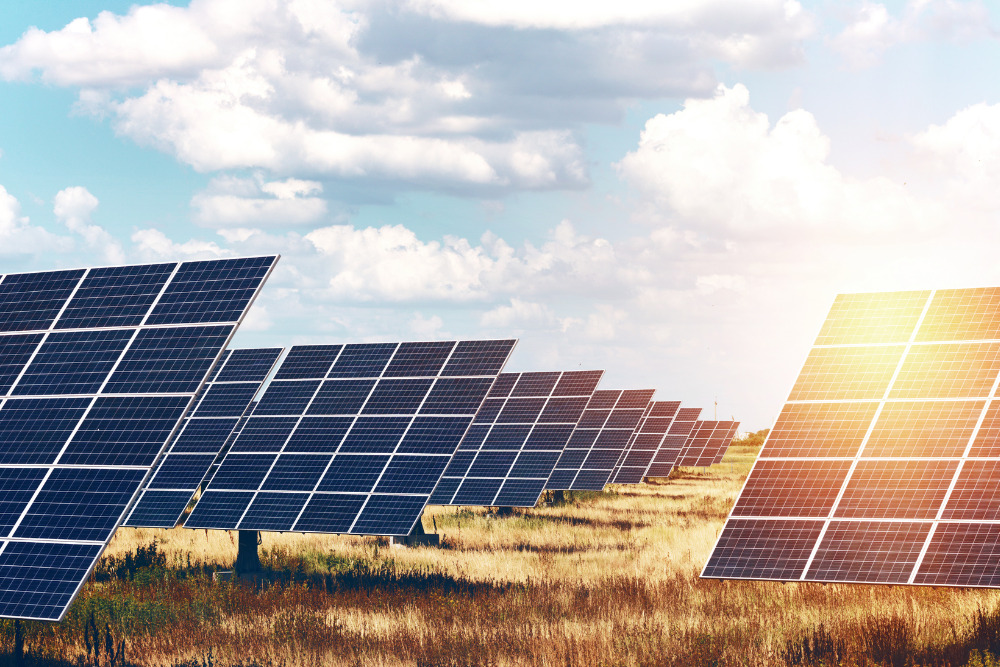Solar Power 101: A Novice's Guide to Sustainable Energy Solutions
As the world progressively moves in the direction of sustainable power services, comprehending the principles of solar power comes to be vital for both people and services. By discovering the advantages of solar modern technology, together with the financial rewards and installment procedures, one can get a more clear point of view on how to properly integrate this renewable source into their power strategy.
Comprehending Solar Power
At its core, understanding solar energy entails understanding the essential concepts of exactly how sunlight can be transformed right into useful electricity. Solar energy is obtained from the sun's radiation, which can be taken advantage of via different modern technologies.

Understanding solar power additionally includes acknowledging its ecological benefits. By utilizing sunlight, we can mitigate greenhouse gas emissions and minimize air contamination, adding to a much more sustainable future. The developments in modern technology and efficiency of planetary systems continue to improve their viability, making solar energy a significantly appealing alternative for international power demands.
Kinds of Solar Power Solutions
Various kinds of solar energy systems are frequently used to harness solar power for electricity generation. The main groups include photovoltaic or pv (PV) systems, focusing solar power (CSP) systems, and solar thermal systems.
Solar systems utilize photovoltaic panels composed of silicon cells that convert sunlight straight into electricity. These systems are flexible and can be installed on rooftops, ground places, or incorporated right into building materials.
Concentrating Solar energy systems, on the other hand, utilize mirrors or lenses to focus sunlight onto a small location, producing warm that drives a vapor generator to produce electrical energy - Simply Solar Illinois. CSP systems are typically released in large-scale power plants and require direct sunlight, making them much less ideal for over cast areas

Each type of solar power system has its special attributes, applications, and suitability relying on geographical place, energy requirements, and budget, making it important to evaluate options based on certain conditions. - Simply Solar Illinois

Benefits of Solar Power
Using solar power with different systems not just provides a lasting way to produce power yet also offers a wide variety of benefits. One of the most significant advantages is the decrease in greenhouse gas emissions, adding to a cleaner atmosphere and combating environment change. Solar power is sustainable, implying it is limitless and available as long as the sun radiates, unlike fossil gas, which are limited and depleting.
Additionally, solar power can result in significant cost financial savings in time. Homeowners and companies can reduce their electrical energy costs substantially, and in many cases, they might earn debts for excess power generated with internet metering. Furthermore, the solar industry produces jobs, from manufacturing to installment, boosting regional economic climates.
An additional compelling advantage is power freedom. By producing their very own electricity, people and neighborhoods can minimize dependence on external power sources, improving durability against fluctuating energy costs and supply disturbances. Solar power systems call for very little upkeep, making them a hassle-free choice for lasting power generation.
Installation Process Review
The installment process for solar power systems generally involves several crucial actions that make certain efficient integration right into a building. Originally, an extensive site analysis is conducted to assess the roofing system's positioning, shielding, and architectural honesty, which are vital to maximizing solar panel efficiency. Following this assessment, the layout stage starts, where a tailored solar power system is configured based on the homeowner's energy requirements and choices.
As soon as the style is settled, the needed permits and authorizations are acquired from neighborhood authorities, making sure conformity with guidelines. The real installation involves mounting the solar panels on the roof covering or ground, connecting them to an inverter, and integrating the system with the residential property's electric Get More Info arrangement. This stage may additionally entail installing battery storage space systems, depending on the style.
After installation, a comprehensive examination is carried out to validate the system's performance and safety and security. Ultimately, the visit their website system is commissioned, and home owners are educated on its operation and maintenance. With the setup full, the solar energy system can begin producing renewable resource, adding to sustainability and lowering utility expenses. This structured approach makes sure that planetary systems are both effective and trustworthy, maximizing their lasting benefits.
Financial Incentives and Cost Savings
Discovering the monetary rewards and financial savings associated with solar power systems can substantially boost the charm of making the button to renewable resource. Numerous rewards exist at government, state, and neighborhood levels, created to lower the first costs connected with solar installation. Among the most remarkable rewards is the federal solar tax obligation credit report, which enables homeowners to deduct a percentage of their solar system installment costs from their government tax obligations. Since 2023, this credit report stands at 30%, providing significant savings.
Along with tax obligation credit scores, lots of states offer rebates that can better decrease in advance expenditures. Some energy business likewise give performance-based incentives, gratifying solar power manufacturing with time. Financing options, such as solar finances and leases, allow customers to set up systems with little to no deposit, making solar power more available.

Long-lasting savings are an additional critical element. By generating their own electrical power, homeowners can substantially decrease or perhaps remove their monthly energy bills. Furthermore, solar systems can boost building worths, giving a solid return on investment. In general, the mix of motivations and cost savings makes solar power an economically appealing option for many homes.
Conclusion
In conclusion, solar power stands for an important pop over to these guys part of lasting energy options, giving a path toward reduced carbon impacts and boosted environmental protection. Eventually, the change to solar power not just promotes environmental duty yet also advertises economic financial savings and energy independence.